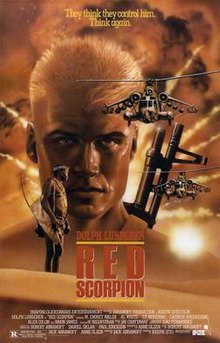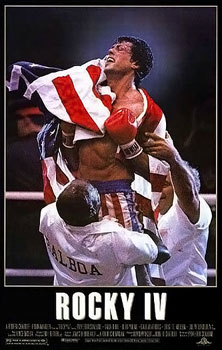
Rocky IV is a 1985 American sports drama film written, directed by, and starring Sylvester Stallone. The film is the sequel to Rocky III (1982) and the fourth installment in the Rocky film series. It also stars Talia Shire, Burt Young, Carl Weathers, Brigitte Nielsen, and Dolph Lundgren. In the film, Rocky Balboa (Stallone) confronts Ivan Drago (Lundgren), a Soviet boxer responsible for a personal tragedy in Balboa's life.

Jonas Malheiro Savimbi was an Angolan revolutionary, politician, and rebel military leader who founded and led the National Union for the Total Independence of Angola (UNITA). UNITA was one of several groups which waged a guerrilla war against Portuguese colonial rule from 1966 to 1974. Once independence was achieved, it then became an anti-communist group which confronted the ruling People's Movement for the Liberation of Angola (MPLA) during the Angolan Civil War. Savimbi had extensive contact with anti-communist activists in the United States, including Jack Abramoff and was one of the leading anti-communist voices in the world. Savimbi was killed in a clash with government troops in 2002.

Showdown in Little Tokyo is a 1991 American buddy cop action film directed by Mark L. Lester, who also produced with Martin E. Caan. The film stars Dolph Lundgren and Brandon Lee; it was the latter's first American film role. The film was released in the United States on August 23, 1991. The film gained a cult following among action fans especially for the chemistry between Lundgren and Lee.
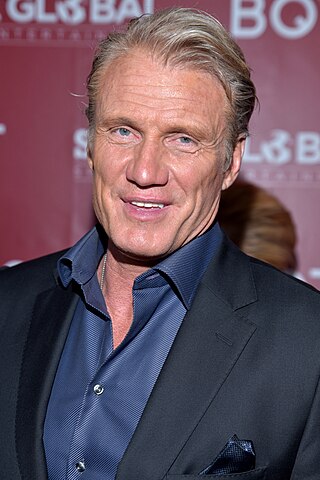
Hans "Dolph" Lundgren is a Swedish-American actor, filmmaker and martial artist. Born in Spånga, Sweden, Lundgren became interested in martial arts at a young age. This would lead him to hold the rank of 4th dan black belt in Kyokushin karate and become European champion in 1980 and 1981. In 1982, while studying to get a master's degree, he became the boyfriend of singer Grace Jones. With her he moved to New York City and started to take acting classes. In 1985, Lundgren had a breakthrough role playing the lead villain as an imposing Soviet boxer named Ivan Drago in Sylvester Stallone's Rocky IV.

Jack Allan Abramoff is an American lobbyist, businessman, film producer, writer, and convicted felon. He was at the center of an extensive corruption investigation led by Earl Devaney that resulted in his conviction and 21 other people either pleading guilty or being found guilty, including White House officials J. Steven Griles and David Safavian, U.S. Representative Bob Ney, and nine other lobbyists and congressional aides.
Craig Michael Williamson, is a former officer in the South African Police, who was exposed as a spy and assassin for the Security Branch in 1980. Williamson was involved in a series of events involving state-sponsored terrorism. This included overseas bombings, burglaries, kidnappings, assassinations and propaganda during the apartheid era.

The Punisher is a 1989 vigilante action-thriller film directed by Mark Goldblatt, written by Boaz Yakin, and starring Dolph Lundgren and Louis Gossett Jr. Based on the Punisher character from Marvel Comics, the film changes some details of the character's origin, and eliminates the signature skull logo; instead, The Punisher uses a knife with the skull on its pommel. It was shot in Sydney, co-starring Jeroen Krabbé, Kim Miyori, Nancy Everhard, and Barry Otto.
The International Freedom Foundation (IFF) was a self-described anti-communist group established in Washington, D.C. founded in 1986 by former lobbyist Jack Abramoff. Its purported aim was to promote individual and collective freedoms worldwide: freedom of thought; free speech; free association; free enterprise; and, the free market principle. It came into being after the Democratic International, a 1985 meeting of anti-Communist rebels held at the headquarters of UNITA in Jamba, Angola. The IFF campaigned against regimes and movements it described as Soviet allies. To achieve its aim the IFF, with offices in London and Johannesburg, sponsored symposia with high-profile speakers such as Henry Kissinger. Among its eight periodicals, the IFF published a monthly newsletter—the Freedom Bulletin—with three editions: International; UK/Europe; and, Republic of South Africa. The IFF ceased its activities in 1993.

The Mechanik is a 2005 German-American vigilante action-thriller film directed by and starring Dolph Lundgren, who also co-wrote the screenplay with Bryan Edward Hill. The film co-stars Ben Cross, Ivan Petrushinov, Olivia Lee and Raicho Vasilev. Most of the film was shot in Bulgaria and there are many Bulgarian actors in the cast as well.
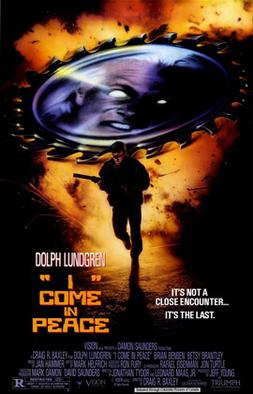
I Come in Peace is a 1990 American science fiction action film directed by Craig R. Baxley, and starring Dolph Lundgren, Brian Benben, Betsy Brantley and Matthias Hues. The film was released in the United States on September 28, 1990.

Relations between Angola and South Africa in the post-apartheid era are quite strong as the ruling parties in both states, the African National Congress in South Africa and the MPLA in Angola, fought together during the Angolan Civil War and South African Border War. They fought against UNITA rebels, based in Angola, and the apartheid-era government in South Africa which supported them. Nelson Mandela mediated between the MPLA and UNITA during the final years of the Angolan Civil War. Although South Africa was preponderant in terms of relative capabilities during the late twentieth century, the recent growth of Angola has led to a more balanced relation.
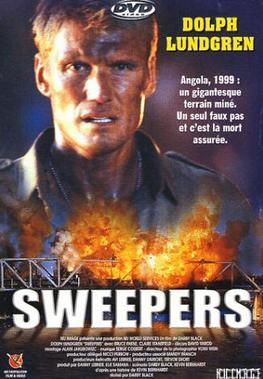
Sweepers is a 1998 American-South African action film directed by Keoni Waxman and starring Dolph Lundgren, Claire Stansfield and Bruce Payne.

Command Performance is a 2009 American action film starring and directed by Dolph Lundgren, also written with Steve Latshaw. The film co-stars Melissa Smith, Hristo Shopov, Dave Legeno, and Lundgren's real-life daughter Ida Lundgren in her feature film debut.

Icarus is a 2010 Canadian action film starring and directed by Dolph Lundgren. The script was written by Raul Inglis. The film co-stars David Lewis, Samantha Ferris, and Bo Svenson. The film centers around Edward Genn, a former Soviet hitman known as "Icarus". After the collapse of the Soviet Union, he has moved to the United States to begin a new life, but his past catches up to him.
Shapiro-Glickenhaus Entertainment was a company formed at the height of the home video industry in 1982 by producer Leonard Shapiro and director James Glickenhaus to produce and distribute low-budget horror and action films.

One in the Chamber is a 2012 American action film directed by William Kaufman, and starring Cuba Gooding Jr., and Dolph Lundgren. Gooding and Kaufman had previously worked together on the 2011 film The Hit List. The film was released on direct-to-DVD in the United States on August 21, 2012.

Red Scorpion 2 is a 1994 American action film starring Matt McColm, John Savage and Jennifer Rubin. It was directed by Michael Kennedy. The film is a sequel to the 1988 film Red Scorpion which starred Dolph Lundgren, although the story is largely unrelated to the first installment.

The Package is a 2012 American action film directed by Jesse V. Johnson and starring Steve Austin and Dolph Lundgren. The film was shot in Abbotsford, Langley, and Vancouver, British Columbia, Canada, in twenty days from February 14 to March 5, 2012.

Blood of Redemption is a 2013 American crime action thriller film directed by Giorgio Serafini and Shawn Sourgose. The film was released on direct-to-DVD and Blu-ray in the United States and Canada on September 24, 2013. The film stars Dolph Lundgren, Billy Zane, Gianni Capaldi, Vinnie Jones and Robert Davi.
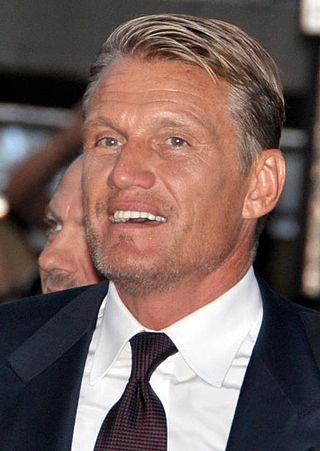
Dolph Lundgren is a Swedish-American actor, filmmaker, and martial artist. Lundgren's breakthrough came in 1985, when he starred in Rocky IV as the imposing Soviet boxer Ivan Drago. Since then, he has starred in more than 69 films, almost all of them in the action genre.
